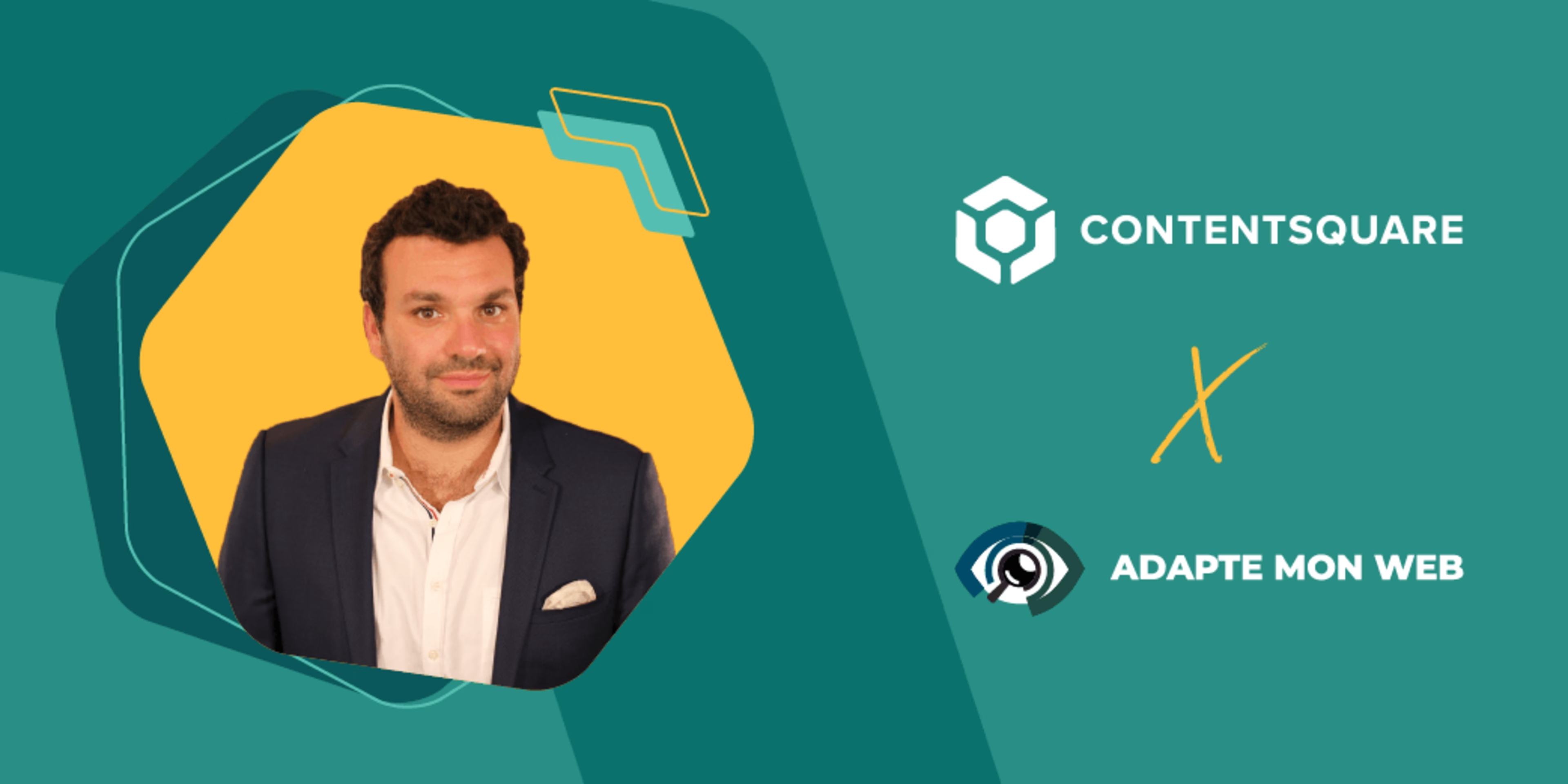Every product and business decision we make at Contentsquare leads straight back to our mission of empowering brands to create better digital experiences. Today, we are adding two very important words to this mission: for all. Because how can we hope to transform the digital landscape if we improve the experience only for some?
Our recent acquisition of startup Adapt My Web marks our commitment to helping brands provide barrier-free experiences for all their customers, and to raise the standards of digital excellence in line with the principles of accessibility. While we were breaking down data silos and democratizing analytics, the team at AMW was busy addressing digital exclusion with its adaptive software.

Their technology embraces the same values we hold dear at Contentsquare: it’s innovative, it solves a real problem, and more importantly, it’s simple to use. I was impressed the minute I saw their plug-in in action — in just a few clicks, a user can modify an entire web experience to make it work for them.
Over the next few months, we’ll be integrating this feature into our solution, and equipping all our clients with this (we believe) necessary technology.
No digital happiness without accessibility
So why acquire an assistive tech company today? Because more than just creating ‘good’ experiences, we want to help businesses invest in their customers’ digital happiness. Digital convenience might have been a worthy goal once upon a time, but with the amount of time each of us spends online today, making experiences ‘convenient’ is simply not enough. We’re aiming higher because we think improving our collective digital wellbeing is crucial.
The physical world is full of examples of decisions made and solutions found to making environments and services accessible to all people — whether it’s a ramp outside a store, a kneeling bus, a door that opens automatically, an audio signal at a pedestrian crossing… So why are we not seeing the same efforts online?
Think of how much of your life today is connected — we work, learn, shop, bank, socialize, take care of our health online. Everyone has the right to access these types of experiences, and feel good doing so. We don’t want a world where experiences are delightful for some people, but a struggle for others.
According to the WHO, more than 1 billion people live with some form of disability, and “almost everyone will be temporarily or permanently impaired at some point in life.” By committing to accessible experiences today, we are not only designing for those around us, but for the needs many of us will have at some point in the future.
Accessibility: the first step in personalization
And providing consumers with accessible experiences is entirely within reach. The possibilities of AI and technology mean there is no reason today for experiences not to be enjoyed by every individual.

Meeting the needs of every individual is in fact a key focus across industries, as companies invest in ever-more sophisticated personalization capabilities. But the very first step in personalization should be to make sure no individual is excluded from a product or brand experience. Product recommendations and a coupon on your birthday are no use if you cannot access or navigate the site.
It may seem contradictory, but personalization — the action of making experiences unique to individuals — is only meaningful if it can be imagined in a way that is universally beneficial.
Our ongoing commitment to accessibility
The democratization of tools has allowed technology to have a greater impact — on how we work, on the efficiency of our solution-finding, and on our ability to understand where we can bring value in the digital world.
Along with making the AMW technology available to our clients, we’re also going to integrate AMW’s expertise into the Contentsquare family, to help brands have an ongoing way to track all user-friendliness and to meet accessibility guidelines worldwide.
I am also pleased to announce the creation of the Contentsquare Foundation to help expand the availability of accessibility technology not just across the industry but to universities, schools and healthcare organizations. To date, 15,000 students as well as thousands of educators and healthcare professionals have already benefited from these assistive tools for reading. We are committed to increasing these efforts and our ambition today is to provide these tools to as many young people as we can.
The early years of Contentsquare were all about racing to find a solution to help brands visualize that invisible piece of the customer experience puzzle: what goes on inside their website or app. In the past two years our focus has been on growth and expansion, and bringing our technology to more and more businesses. Today we’ve reached the level of maturity where we want to also make sure we are doing our bit to build a fairer digital society by reducing digital exclusion.
We’re very excited to launch this new digital accessibility initiative, and to be working with such passionate and expert partners.

Passionate about numbers and statistics, I founded Contentsquare in 2012 and have since served as the CEO, growing the company exponentially and promoting the importance of UX to optimize the customer journey. I believe knowledge is power, and am committed to change the way companies work by creating a data-driven culture for everyone.
